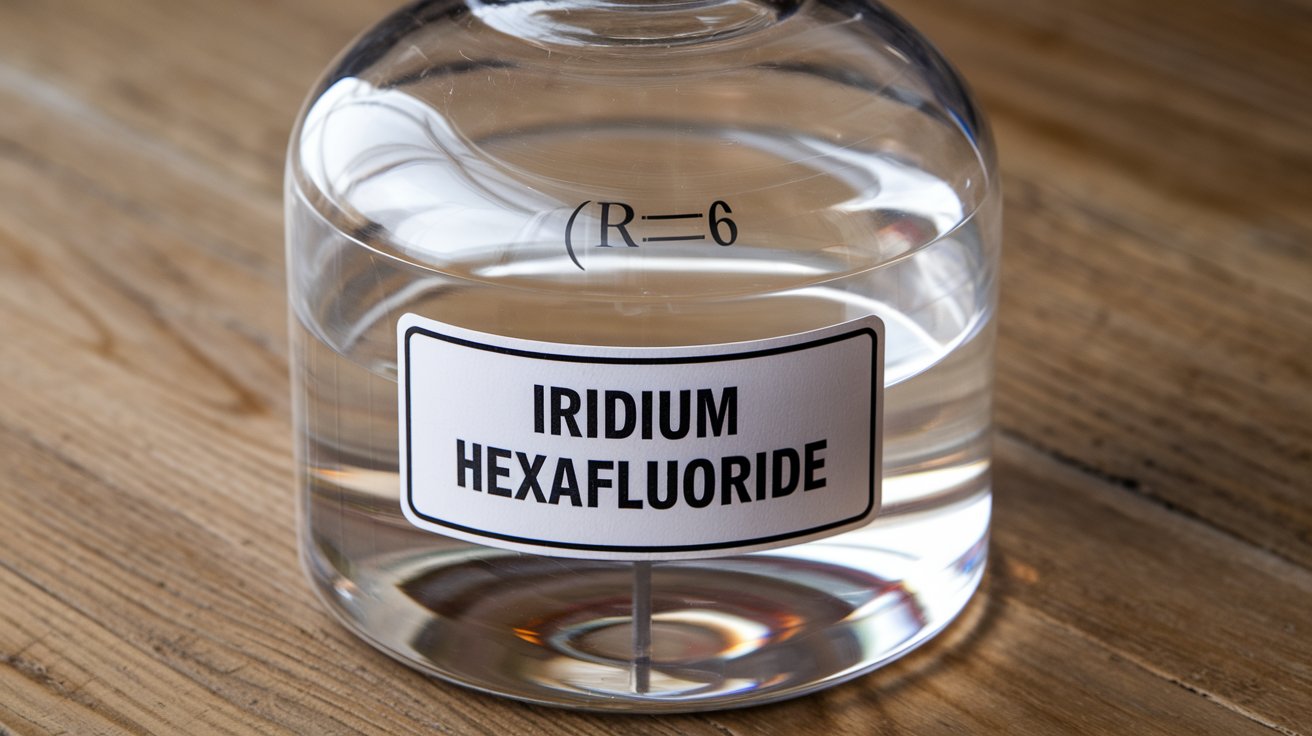
Iridium Hexafluoride might sound like something out of a sci-fi movie, but it's a real chemical compound with some intriguing properties. What exactly is Iridium Hexafluoride? Iridium Hexafluoride (IrF6) is a yellow crystalline solid that’s highly reactive and used in various scientific applications. This compound is fascinating due to its unique structure and the way it interacts with other elements. Scientists often study it to understand more about the behavior of transition metals and their compounds. Whether you're a chemistry enthusiast or just curious about the elements, learning about Iridium Hexafluoride can open up a world of knowledge about how our universe works on a molecular level.
Key Takeaways:
- Iridium hexafluoride is a unique yellow solid with strong oxidizing properties, used in creating thin films and studying nuclear fuel processing. It requires strict safety measures due to its toxicity and reactivity.
- Synthesized in 1963, iridium hexafluoride has an octahedral geometry and can react with glass. Despite its hazardous nature, it is relatively stable in dry air and has potential applications in material science.
What is Iridium Hexafluoride?
Iridium hexafluoride (IrF6) is a chemical compound composed of iridium and fluorine. Known for its unique properties and applications, it has intrigued scientists for years. Let's dive into some fascinating facts about this compound.
- Iridium hexafluoride is a yellow crystalline solid at room temperature.
- It has a molecular weight of 304.22 g/mol.
- This compound is one of the few hexafluorides known to exist.
- IrF6 is highly reactive and can react with water to form iridium dioxide and hydrofluoric acid.
- It is paramagnetic, meaning it has unpaired electrons that make it attracted to magnetic fields.
Chemical Properties of Iridium Hexafluoride
Understanding the chemical properties of IrF6 helps in grasping its behavior in various reactions and environments.
- Iridium hexafluoride has an octahedral geometry, with six fluorine atoms symmetrically arranged around the iridium atom.
- It is a strong oxidizing agent, capable of oxidizing other substances by accepting their electrons.
- The compound can sublime at 53°C, changing directly from a solid to a gas without becoming liquid.
- IrF6 can form adducts with Lewis bases, where it accepts electron pairs from the base.
- It is thermally stable up to 300°C, beyond which it decomposes.
Synthesis and Production
The production of iridium hexafluoride involves specific methods and conditions to ensure purity and stability.
- Iridium hexafluoride is typically synthesized by fluorinating iridium metal at high temperatures.
- The process requires fluorine gas (F2) and temperatures around 300°C.
- Safety precautions are crucial during synthesis due to the compound's reactivity and the toxicity of fluorine gas.
- The reaction is usually carried out in a nickel or Monel reactor to withstand the corrosive nature of fluorine.
- The resulting product is purified through sublimation to remove any impurities.
Applications of Iridium Hexafluoride
Despite its reactivity, IrF6 has several applications in various fields.
- Iridium hexafluoride is used in chemical vapor deposition (CVD) processes to create thin films of iridium.
- It serves as a precursor for synthesizing other iridium compounds.
- The compound is utilized in catalysis for certain chemical reactions due to its strong oxidizing properties.
- IrF6 is studied for its potential in nuclear fuel processing.
- It has applications in material science for developing new materials with unique properties.
Safety and Handling
Handling IrF6 requires strict safety measures due to its hazardous nature.
- Iridium hexafluoride is highly toxic and can cause severe burns upon contact with skin.
- It must be handled in a well-ventilated area to avoid inhalation of fumes.
- Protective gear, including gloves and goggles, is essential when working with IrF6.
- The compound should be stored in airtight containers to prevent moisture absorption and decomposition.
- In case of exposure, immediate medical attention is necessary due to the compound's corrosive effects.
Interesting Facts
Here are some intriguing tidbits about IrF6 that highlight its unique characteristics.
- Iridium hexafluoride is one of the few compounds where iridium exhibits a +6 oxidation state.
- It was first synthesized in 1963 by Neil Bartlett, a pioneer in fluorine chemistry.
- The compound's yellow color is due to its specific electronic transitions.
- IrF6 can react with glass, making it necessary to use specialized equipment for handling.
- Despite its reactivity, IrF6 is relatively stable in dry air, unlike many other hexafluorides.
The Final Word on Iridium Hexafluoride
Iridium hexafluoride, a fascinating compound, holds a unique place in chemistry. Its high reactivity and oxidizing power make it a subject of intense study. Despite its complexity, understanding this compound can lead to breakthroughs in material science and industrial applications.
From its yellow-green color to its octahedral structure, iridium hexafluoride showcases the intricacies of chemical bonding. Its ability to form strong bonds with other elements opens doors to innovative uses.
While handling this compound requires caution due to its reactive nature, the potential benefits in scientific research and technology are immense. Iridium hexafluoride isn't just a chemical curiosity; it's a gateway to new discoveries.
Keep exploring the world of chemistry. You never know what hidden gems you might uncover next.
Frequently Asked Questions
Was this page helpful?
Our commitment to delivering trustworthy and engaging content is at the heart of what we do. Each fact on our site is contributed by real users like you, bringing a wealth of diverse insights and information. To ensure the highest standards of accuracy and reliability, our dedicated editors meticulously review each submission. This process guarantees that the facts we share are not only fascinating but also credible. Trust in our commitment to quality and authenticity as you explore and learn with us.
